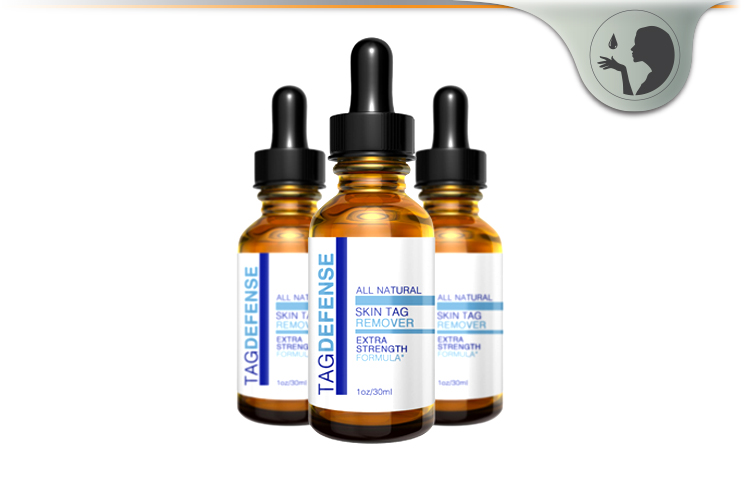The TagDefense all natural skin tag remover claims to be a painless way to remove unsightly skin tags.
Features of TagDefense
- Natural formula
- Claims to remove skin tags quickly and painlessly
- Works on a variety of skin types
- Fast acting solution
TagDefense has been invented using ancient methods discarded by mainstream medical science to eliminate Skin Tags. Proven over centuries, this humble remedy is currently available to the American people.
What Are The Benefits of TagDefense?
TagDefense claims to work quickly and naturally to remove skin tags from any part of the user’s skin.
Tag Defense is also one of the few products on the market that come with a free trial. It should be noted that this incentive is for residents in the United States only, and that after the trial has ended, one will be rebilled for a full month’s supply of the product as per the Tag Defense terms and conditions.
Because Tag Defense is reportedly made from 100% organic ingredients, users should not worry about side effects or interactions with prescription medicine. However, it should be noted that the above does not constitute as medical advice and that users should still consult with their doctors if they are hesitant about their suitability for Tag Defense.
What are Skin Tags?
A skin tag is a tiny, benign, outpouching of skin that is typically connected to the underlying skin by a thin stalk. Skin tags seem like tiny bits of “hanging” skin and typically occur in sites where clothing rubs against the skin or in which there's skin-to-skin friction, like the underarms, neck, upper chest, and groin.
Skin tags aren't present at birth and their frequency increases with age. Skin tags could be observed in about 25 percent of adults. Consequently, skin tags may run in families.
A skin tag is medically termed an acrochordon. Occasionally, other conditions are used to refer to skin tags.
Oftentimes, skin tags are believed to develop due to friction between adjacent regions of skin or between clothing and skin. Typical sites for skin tags include the following:
- The underarms
- Upper chest (particularly beneath the breasts)
- Neck
- Eyelids
- Groin folds
Because of the greater skin-to-skin contact and friction, skin tags are more prevalent in overweight or obese people. Although skin tags can occasionally be observed in kids, they tend to increase with age and are most frequent in middle-aged and elderly individuals.
Studies have suggested that an inherited susceptibility to the development of skin tags. The hormonal changes of pregnancy may also stimulate the growth of skin tags, particularly during the second phase of pregnancy.
Skin tags aren't cancers. Reports of skin cancers appearing in skin tags are extremely rare.
What Are the Symptoms of Skin Tags?
Skin tags are generally flesh-colored or might appear brown in light-skinned individuals. They may be smooth or wrinkled and range in size from very tiny (1 mm) to approximately the size of a grape. Although it's usually possible to recognize that a stalk that attaches the skin tag into the underlying skin, very little skin tags might seem as raised bumps on the skin.
If a skin tag is twisted onto its own blood supply it may turn red or black. Skin tags may bleed if captured on clothing or are differently torn. Skin tags are not typically painful and aren't associated with any specific skin ailments or symptoms.
However, people who are prone to diabetes and have a skin condition called acanthosis nigricans frequently have associated skin tags, suggesting that factors that make one prone to diabetes may be operative in the progression of skin tags.
Skin tags ordinarily do not require medical care unless they're bothersome to the patient or if removal for cosmetic reasons is considered.
How Are Skin Tags Diagnosed?
The diagnosis of skin tags is created by observation as skin tags normally have a very characteristic appearance.
However, your physician may recommend that a skin tag be excised and sent to a pathologist for microscopic diagnosis to rule out other conditions of the skin that appear similar in look to skin tags.
Certain types of moles (nevi), benign skin growths (such as seborrheic keratosis), and lotions can sometimes resemble skin tags. It's extremely rare to get a skin cancer to resemble a skin tag.









